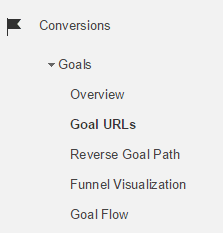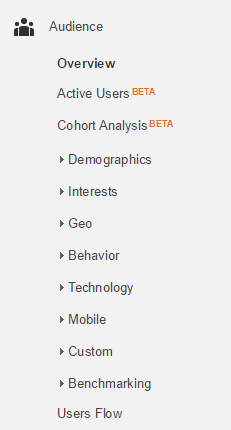Analyzing data has become a major component of marketing strategy. Could you imagine performing marketing duties without analyzing metrics to make sure you are reaching your goals? Of course not. Tracking however, goes beyond gathering results. It’s also important to analyze if you are using and collecting the data in the best way. You should ask yourself the following questions:
- How do I measure analytics? Which metrics are the most important for my goals?
- Do I measure the sources of my traffic? Is segmentation part of my strategy or is all traffic just traffic? Should I create buyer personas to decide who to target and minimize less valuable traffic?
- Do I effectively track results? Am I measuring the metrics that drive conversions? Am I satisfied with the conversion rate? Do my conversions lead to more sales? What interrupts the conversion process? What are the best ways to deal with interruptions?
With the answers to these questions, you will be able to determine whether to focus on traffic or conversions more to meet your business goals.
Differences between measurements for traffic and conversion:
Traffic: Whenever your website gets significant traffic, you automatically believe it is becoming more valuable. It is true that more traffic increases the visibility of your brand, but all traffic is not beneficial. It can generally be good to get as much as possible, but it might hurt your business if the majority of your target audience is not within that traffic.

For example, let’s say you own an Italian restaurant and want to analyze the traffic coming to your website. If we take the first example, which is traffic coming from a direct search, you see that 628 people visited your site. The question to ask is: are all these visitors in your target audience? Although a significant percentage probably typed your restaurant’s name because they are familiar with your business, another portion might have searched for your name thinking you serve French cuisine. As a result, you should not deal with all this traffic in the same way, rather, you should focus on the visitors that will lead to conversions. In addition, you should never think that traffic to your website will result in sales transactions and boost revenue. Conversion is your path to more sales.
Conversions: Unlike traffic, if your major goal is to increase sales, you should forcus on conversions first. This does not mean that traffic is not important or that you should ignore it. Traffic is essential because without it, you cannot expect conversions. It’s simply important to understand that conversions are not traffic and will therefore not automatically increase sales. Focusing on conversions is an accurate process since users who convert into customers are the ones you should nurture and engage to transform them into loyal followers that will help increase sales. Now, let’s get back to the picture mentioned above.

Let’s look at the first traffic source, “the direct search”, again. From the 628 visitors, you’ll notice that only 2 completed the goal to sign-up. What does this mean? It means that the conversion to traffic ratio is very low. 628 seems like a good amount, but when only 2 convert this signals a problem. With these numbers we can conclude that the main problem is the conversion rate and not the amount of traffic. The next question to ask is whether the cause is related to the kind of traffic or if there are problems in the conversion processes to fix. The answer could be both.
To improve conversion results, choose one element to focus on in order to determine the cause of the problem. For example, you can find out how many visitors have signed up to your newsletter and the value assigned in dollars according to the number of sign-ups.



You can improve the quality of your traffic by identifying your target audience through:
- Demographics listed on Google analytics (age, gender, interest)
- Geographic locations
- Personal interviews with prospects
- Tracking followers on social media (Twitter influencers, their followers and who they follow)


In summary, in order to increase conversion rates, you have to start with getting the right traffic. A lot of traffic to your website doesn’t mean you will boost revenues. What matters is your quality of traffic, not quantity. Moreover, the conversion metric is more important after you have identified the right traffic. The more suitable your traffic is to your business, the greater your conversions and the more likely you are to increase sales.
Don’t forget to share this article


